Organization for Economic Cooperation and Development on Tuesday, which found that 15-year-old girls around the world, outperform boys in science – except for in the United States, Britain and Canada. via The Guardian
Breaking down theNational Assessment of Educational Progress (NAEP) scores by gender, girls averaged 151 points (out of a possible 300), three points higher than for boys in the first-ever Technology and Engineering Literacy (TEL) assessment was given in 2014. via The Atlantic
So what is it? Girls are better than boys at science? Or girls are worse at science? Or do girls in higher socio-economic brackets outperform boys?
What’s the end goal? Karen Peterson, the chief executive of the National Girls Collaborative Project, says it’s to “increase their persistence and resilience in STEM studies so that those early kernels of interest translate into meaningful careers.”
As a mom of two girls, I am of the opinion that it’s the parents’ job to pay attention to where the child leads them. For my oldest, her path is toward art school. For my middle daughter, a STEM career mixed with an entrepreneur’s drive seems likely. And yet, the big thinkers at RISD think they very well will end up at the same place. For what is STEM without creativity?
If you peruse the timeline of female scientists and their picture book biographies, one thing is clear. If someone really wants a career in science, she’s not going to let anything stop her. Here’s to the progress women have made in science, and here’s to supporting all girls as they find their passion in life.
What are your favorite STEM books that inspire girls? Thanks for sharing!
STEM Picture Books for Girls
Rosie Revere, Engineer by Andrea Beaty
Life might have its failures, but this was not it.
The only true failure can come if you quit.
Rosie is a closet inventor after she thought her cheese hat python deterrent was ridiculed. She uses the hat with some tweaks into a flying contraption for her aunt and learns that failure is the problem-solving tool of an engineer. [picture book, ages 4 and up]
Ada Twist, Scientist by Andrea Beaty, illustrated by David Roberts
Ada didn’t speak until she turned three, but when she did, she was full of questions, especially about why. Turns out, she has all the traits and the heart of a great scientist (though she’s also an exhausting kid to raise!). [picture book, ages 4 and up]
The Most Magnificent Thing by Ashley Spires
A little girl has an amazing idea that she’s going to make the most magnificent thing! All she has to do is make it. But making her magnificent thing leads down a frustrating path of trial and error. This book best reflects–Inspiration + motivation + passion = Endless possibilities. The girl’s emotional journey reminds a child not to quit. [picture book ages 3 and up]
Small World by Ishta Mercurio, illustrated by Jen Corace
It’s a small world when you view the earth from the vantage point of another planet. Ishta Mercurio writes in lyrical prose of this journey of the world of Nanda as a baby that starts off small and cozy, but with nurturing, grows larger and larger. As Nanda explores the world around her, she discovers her love of science and physics. Her STEM passion catapults her to her career as an astronaut blasting off into space It’s from here that she can look back at her blue planet and realize what a small and interconnected world we live in. [picture book, ages 4 and up]
Sadie Sprocket Builds a Rocket by Sue Fliess, illustrated by Annabel Tempest
Review from Randomly Reading:
“Sadie is a wonderful fictional role model, a girl who uses her imagination creatively, she’s also a dreamer, a doer, and a problem solver…and, oh, yes, a trailblazer. The whole story is written in rhyming quatrains that never lose their musicality and the digital cartoon-style illustrations are detailed and colorful and make clear for the littlest readers that Sadie’s trip to Mars is an imaginary one, but that doesn’t diminish the STEM message.” [picture book, ages 4 and up]
Mira Forecasts the Future by Kell Andrews, illustrated by Lissy Marlin
Mirabella watches her mother tell fortunes on the boardwalk. She wants to predict the future too, but she doesn’t have the gift. Instead, she uses science to make predictions about the weather by observing the wind, clouds, and sky. She uses instruments too: thermometer, barometer, rain gauge, windsock, and anemometer. Now, she can open for business as a weather station, and her predictions help avert danger during the annual surf competition. [picture book, ages 4 and up]
Oh No!: Or How My Science Project Destroyed the World by Mac Barnett, illustrated by Dan Santat
Like Godzilla, her science project robot was wreaking havoc. She probably shouldn’t have given it a superclaw, laser eye, or the power to control dogs’ minds without some safeguards. Oh well. At least she has another science project to counter the robot. Her giant toad is much more responsive to her commands and able to take down the robot, but now there is a giant toad on the loose! [picture book, ages 4 and up]
Rube Goldberg’s Simple Normal Humdrum School Day by Jennifer George, illustrated by Ed Steckley
Pair this picture book full of Rube Goldberg’s ingenious ideas with Ruby Goldberg’s Bright Idea. It’s perfect for elementary school simple machines STEM units. For videos of Rube Goldberg machines, check out The Kid Should See This. [picture book, ages 6 and up]
Ruby Goldberg’s Bright Idea by
Ruby Goldberg was named after Rube Goldberg. For the science fair this year, she’s decided to join forces with her arch-rival, Dominic. In working together, and paying attention to the people in her life instead of being so focused on her science experiments, Ruby learns that collaboration is also important for science. [chapter book, ages 8 and up]
The Evolution of Calpurnia Tate by Jacqueline Kelly
11-year-old Calpurnia Tate lives in Fentress, Texas (near Austin) in the year 1899. At this turn of the century, things are changing even in small-town Fentress. Calpurnia’s grandfather is at the forefront of this change, and he embraces it as a naturalist scientist and early member of the National Geographic Society. Calpurnia gravitates toward her grandfather learning about science and keenly observing all around her. But one thing she does notice, besides the flora and fauna, is that girls are expected to marry and keep house, and not go to college. Calpurnia’s evolution is to test this theory of homemaking versus college for girls. But anything is possible at the start of a new century, or is it? [chapter book, ages 9 and up]
Female STEM Role Models: Picture Book Biographies
Hildegard: Born 1098 AD
Hildegard of Bingen: Scientist, Composer, Healer & Saint by Demi
Hildegard was born with the ability to see lights when she shut her eyes which gave her the ability to predict the future. The lights also gave her headaches so her parents sent her to live at the Benedictine Cloister of Mount St. Disibod where she learned music, reading, and prayer. She became a nun and then was elected Abbess. It was then that she decided to share her secret lights by writing about how to live for God. She also wrote books on natural history and medicine, as well as a cookbook. When she died in 1179, many considered her to be a saint. [picture book, ages 4 and up]
Maria Merian: Born April 2, 1647
Summer Birds: The Butterflies of Maria Merian by Margarita Engle, illustrated by Julie Paschkis
by Margarita Engle, illustrated by Julie Paschkis
“Summer birds” was a medieval name for the mysterious butterflies and moths that appeared suddenly during warm weather and vanished in the fall.
During the Middle Ages, studying insects would be considered witchcraft. Maria Merian wasn’t deterred. She collected butterflies and moths and understood their life cycle from egg to cocoon, to metamorphosis. She kept records of her findings, painting and writing down her observations. She eventually became famous as a scientist, an artist, and an explorer. [picture book biography, ages 3 and up]
The Girl Who Drew Butterflies: How Maria Merian’s Art Changed Science by Joyce Sidman
This is a spectacular book that reflects the incredible accomplishments of Maria Merian, an artist who also should be known as the Mother of Ecology who lived in 17th century Germany when such interests could be punishable by death. In the same way that Maria lured people into science through her gorgeously painted and etched artworks, Joyce Sidman seamlessly combines Maria’s story with science and art. The artwork is carefully chosen to showcase both Maria’s and her family’s pieces as well as how her art influenced others both in her time and beyond. Maria’s careful observations of the life cycles of insects and amphibians came at a time when the general population believed in spontaneous generation. Sidman cleverly breaks this book up into chapters that reflect Maria’s life cycle categories, showing her own evolution from dependence to independence. After reading this book, it’s not a stretch to realize that Maria Merian was the female equivalent of Charles Darwin of her time, notwithstanding that she inspired him!
I hope that this book wins a Newbery and Silbert. It is most deserving. But awards aside, give this book to girls as a female STEM inspiration. [nonfiction chapter book, ages 8 and up]
Mary Anning: Born May 21, 1799
Rare Treasure: Mary Anning and Her Remarkable Discoveries by Don Brown
Mary Anning was a fossil hunter from the time she was small. She and her brothers sold the fossils to help their family make ends meet. When she was twelve, she discovered a fossil of a reptile that lived in the sea. This creature was to be named ichthyosaur or fish lizard. She continued to search for fossils as she grew older, studying them in science books. She discovered the first complete fossil of a plesiosaur and that of a pterodactyl. Her fossil discoveries and her knowledge about them helped to lay the foundation for paleontology, the study of dinosaurs. [picture book biography, ages 4 and up]
Ada Byron Lovelace: Born December 10, 1815
Ada Byron Lovelace and the Thinking Machine by Laurie Wallmark, illustrated by April Chu
by Laurie Wallmark, illustrated by April Chu
Ada’s father was the famous poet Lord Byron, but her mother had a passion for geometry. Measles left her temporarily paralyzed and blind but her mother kept her mind sharp by quizzing Ada on math problems. Her gift with numbers led to her meeting Charles Babbage, a famous inventor, and mathematician. He had designed a mechanical computer but it needed instructions in the form of an algorithm. Ada’s program for this device was the foundation for modern computer science. [picture book biography, ages 6 and up]
Two more books on Ada Byron Lovelace
Maria Mitchell: Born August 1, 1818
Her Eyes on the Stars: Maria Mitchell, Astronomer by Laurie Wallmark, illustrated by Liz Wong
Her Eyes on the Stars is a new picture book biography of Maria Mitchell. Laurie Wallmark deftly covers the drama as she observes a new comet and competes for a prize issued by the King of Denmark for the discovery of a new telescopic comet. Maria Mitchell forged new ground for female scientists, as the first professional female astronomer, and the first female professor of astronomy at Vassar College. There, she nurtured the next generation of female scientists, with three of her former students accepted in the first list of Academic Men of Science. [picture book, ages 8 and up]
Maria’s Comet by Deborah Hopkinson and illustrated by Deborah Lanino
by Deborah Hopkinson and illustrated by Deborah Lanino
In the nineteenth century, girls are not able to become astronomers or scientists. Maria’s father is an astronomer, and she is able to use his telescope to study the stars. She is America’s first woman astronomer, discovering a telescopic comet, and became the first professor of astronomy at Vassar College. [picture book biography, ages 6 and up]
Elizabeth Blackwell: Born February 3, 1821
Who Says Women Can’t Be Doctors?: The Story of Elizabeth Blackwell by Tanya Lee Stone
In the 1830s, there were no female doctors. Women were wives and mothers, teachers, or seamstresses. A friend inspired Elizabeth Blackwell to become a doctor. She applied to twenty-nine medical schools and received a single acceptance from Geneva Medical School in update New York. The teachers had let the students decide whether or not to accept a woman, and the boys voted yes as a big joke. Elizabeth proved she was as smart and capable as any boy.
In the author’s note, Elizabeth could not find work as a doctor after she graduated. She and her sister, also a doctor, started their own hospital, the New York Infirmary for Women and Children. In 1868, Elizabeth opened a medical school for women, The Women’s Medical College of the New York Infirmary. Not only did Elizabeth Blackwell become the first woman doctor, but she paved the way for more to follow her. According to the Association of American Medical Colleges, more than half of all U.S. medical school students today are women. This is Elizabeth Blackwell’s legacy. [picture book biography, ages 4 and up]
Eleanor Prentiss: Born Sep. 21, 1814
Dare the Wind: The Record-breaking Voyage of Eleanor Prentiss and the Flying Cloud by Tracey Fern
Eleanor Prentiss and her husband set a record of eighty-nine days from New York City, down the Cape Horn, to San Francisco, a fifteen-thousand-mile journey by sea. At a time when it was unheard of for a woman to navigate a ship, Eleanor used U. S. Navy Lieutenant Matthew Fontaine Murray’s new scientific approach to navigation to chart the course. [picture book biography, ages 4 and up]
Margaret E. Knight: Born February 14, 1838
Marvelous Mattie: How Margaret E. Knight Became an Inventor by Emily Arnold McCully
Mattie has been an inventor since she was very young, creating toys for her brothers and a foot warmer for her mother. Her first commercial success was a fast sled that she sold to her brother’s friends. When her mother moved the family to work in a textile mill, Mattie befriended the machine shop manager, Mr. Baldwin. To prevent thread shuttlecocks from injuring the workers, Mattie invented a metal guard which was widely used. Mr. Baldwin taught her about patents.
Working at a paper bag factory, Mattie got the idea to create a better machine that would make a square-bottomed bag that would not tip over. She worked on her invention for two years, until it worked perfectly. Many of the paper bags we use today are still being processed by Mattie’s invention. [picture book biography, ages 6 and up]
Kate Sessions: Born November 8, 1857
The Tree Lady: The True Story of How One Tree-Loving Woman Changed a City Forever by H. Joseph Hopkins, illustrated by Jill McElmurry
by H. Joseph Hopkins, illustrated by Jill McElmurry
In the 1860s, girls were discouraged from studying science, but Kate Sessions was not. She liked studying trees and pursued a degree in science from the University of California, the first woman to do so. When she moved to San Diego for her first job, it was a desert town with no trees. She became a tree hunter to find trees for that climate. She grew elms, oaks, eucalyptuses, and palm trees, and soon these trees were to be found everywhere in San Diego. She transformed City Park, now called Balboa Park, into an oasis of trees for the Panama-California Exposition. She’s now known as the Mother of Balboa Park. [picture book biography, ages 4 and up]
Pair this book with another tree lady, Mama Miti: Wangari Maathai and the Trees of Kenya.
Harriet Hemmenway: Born 1858
Minna Hall: Born 1867
She’s Wearing a Dead Bird on Her Head! by Kathryn Lasky, illustrated by David Catrow
Socialite Bostonians Harriet Hemmenway and her cousin Minna Hall were so outraged by the new fashion of hats that threatened bird species in Florida that they started a new group to protect birds and wildlife called the Audubon Society. [picture book biography, ages 6 and up]
Emma Lilian Todd: Born June 10, 1865
Wood, Wire, Wings: Emma Lilian Todd Invents an Airplane  by Kirsten W. Larsen, illustrated by Tracy Subisak
by Kirsten W. Larsen, illustrated by Tracy Subisak
Emma Lilian Todd’s mind was always soaring–she loved to solve problems. Lilian tinkered and fiddled with all sorts of objects, turning dreams into useful inventions. As a child, she took apart and reassembled clocks to figure out how they worked. As an adult, typing up patents at the U.S. Patent Office, Lilian built the inventions in her mind, including many designs for flying machines. However, they all seemed too impractical. Lilian knew she could design one that worked. She took inspiration from both nature and her many failures, driving herself to perfect the design that would eventually successfully fly. Illustrator Tracy Subisak’s art brings to life author Kirsten W. Larson’s story of this little-known but important engineer. [picture book biography, ages 7 and up]
Marie Curie: Born November 7, 1867
Marie Curie and the Power of Persistence by Karla Valenti with Micaela Crespo Quesada, Ph.D., illustrated by Annalisa Beghelli
This picture book runs another story of minions trying to dumb down people alongside the biography of Marie Curie as a “superhero.” I think this is meant to inject humor and appeal to kids who like the wildly popular Minions movies spun off of Despicable Me. I think it makes the story of Marie Curie confusing to kids ages 4 and up who might not realize that Marie Curie is a real person, not a character in a movie. Design-wise, the book layout is also confusing because it runs two parallel stories. I did like the illustration style. This picture book feels like “too many cooks in the kitchen” though I am glad that there is another way to present the achievements of Marie Curie. [picture book, ages 4 and up]
Henrietta Leavitt: Born July 4, 1868
Look Up!: Henrietta Leavitt, Pioneering Woman Astronomer by Robert Burleigh, illustrated by Raul Colon
Although Henrietta Leavitt graduated from Radcliffe College and had a strong interest in science, she, along with most women, was kept from doing key research in almost all the sciences. Her work at Harvard College Observatory measuring star positions from photographs was a data tracking task, but she used her mind to understand this data. She made a breakthrough discovery, relating the blink-time of a star to its brightness. This revelation leads to understanding and measuring the distances of stars from Earth. Despite a limited role as a researcher, Henrietta because a true astronomer, helps us today to understand the size of the universe.
Read the afterword in the back to understand Henrietta Leavitt’s true accomplishment as it’s a little fuzzy in the text. Other women astronomers to read about include Caroline Herschel, Annie Jump Cannon, E. Margaret Burbridge, Wendy Freedman, and Sally Ride. [picture book biography, ages 4 and up]
Julia Morgan: Born January 20, 1872
Julia Morgan Built a Castle by Celeste Mannis
by Celeste Mannis
Julia Morgan completed 450 architectural projects before she worked on William Randolph Hearst’s castle. Her road to becoming an architect seemed pretty smooth in the beginning. She studied engineering at the University of California at Berkeley as the only woman in the class and then went on to work for her favorite teacher, Bernard Maybeck, who taught math and also worked as an architect. Studying at The École des Beaux-Arts for her architecture degree was a test of her perseverance. The trustees would not let her take the entrance exam for over a year, and when they conceded, she was forced to pass it three times. She became the first woman in the history of École des Beaux-Arts to receive a certificate in architecture, but her commission at Mills College that withstood the great earthquake of 1906 was a further testament to her talent as an architect.
It’s interesting to me that William Randolph Hearst, who had discriminatory hiring practices at his publishing companies, chose a female architect for his project. Julia would spend more than half of her fifty-year career working on Hearst’s project, going toe to toe with her famously outspoken client. [advanced picture book biography, ages 8 and up]
You can learn more about Julia Morgan at the Hearst Castle website.
Sarah Josephine Baker (Dr. Jo): Born November 15, 1873
Dr. Jo: How Sara Josephine Baker Saved the Lives of America’s Children by Monica Kulling
Review from The Nonfiction Detectives:
“At ten years old, she decided she wanted to be a doctor after her brother and father died from typhoid, she was even more determined. Baker was persistent, and after graduating from Women’s Medical College of the New York Infirmary, (1898), she took a job with the New York Public Health Department. Her beat, a tough west-side neighborhood called Hell’s Kitchen. “Here, thousands of people, many of them immigrants, lived in run-down apartments. Diseases such as smallpox and typhoid fever spread like wildfire, especially among the young.” Dr. Jo made it a requirement that midwives were licensed, sent nurses to homes of new mothers with newborn children, and organized milk stations throughout the city that offered clean milk.
During her twenty-five years on the job, (becoming the director of the NYC Department of Child Hygiene in 1908), “Dr. Sara Josephine Baker had saved the lives of 90,000 inner-city children across America.” [nonfiction picture book, ages 5 and up]
Edith Clarke: Born February 10, 1883
The Brilliant Calculator: How Mathematician Edith Clarke Helped Electrify America by Jan Lower, illustrated by Susan Reagan
Long before calculators were invented, little Edith Clarke devoured numbers, conquered calculations, cracked puzzles, and breezed through brainteasers. Edith wanted to be an engineer—to use the numbers she saw all around her to help build America.
When she grew up, no one would hire a woman engineer. But that didn’t stop Edith from following her passion and putting her lightning-quick mind to the problem of electricity. But the calculations took so long! Always curious, Edith couldn’t help thinking of better ways to do things. She constructed a “calculator” from paper that was ten times faster than doing all that math by hand! Her invention won her a job, making her the first woman electrical engineer in America. And because Edith shared her knowledge with others, her calculator helped electrify America, bringing telephones and light across the nation. [picture book, ages 7 and up] Releasing March 14, 2023
Irène Curie: Born September 12, 1897
Lise Meitner: Born November 7, 1878
The Woman Who Split the Atom: The Life of Lise Meitner by Marissa Moss
Review by Ms. Yingling Reads:
“This was a very complete, well-written biography of an impressive scientist who overcame a lot of societal disadvantages. The graphic novel-style illustrations at the beginning of the chapters will draw in some readers and are quite fun. There were a lot of details about the different subjects she studied and the experiments she did, and the harrowing job of getting her out of the country is well explained. I also appreciated the author’s note about how people today might think she was foolish, but how Moss’ own family letters from people in similar situations also didn’t seem as alarmed as they should have been. Great combination of science and history in an engaging read.” [middle grade biography, ages 10 and up]
Grace Hopper: Queen of Computer Code by Laurie Wallmark, illustrated by Katy Wu
Rachel Carson: Born May 27, 1907
Rachel Carson and Her Book That Changed the World by
Al Gore wrote, “Silent Spring came as a cry in the wilderness, a deeply felt, thoroughly researched, and brilliantly written argument that changed the course of history. Without this book, the environmental movement might have been long delayed or never have developed at all.”
Rachel Carson rose from poverty to become a biologist and writer, earning a scholarship for graduate school at Johns Hopkins University. During the Great Depression, jobs were hard to come by, especially for a female scientist. Rachel ended up working for the Bureau of Fisheries, writing radio scripts about sea life. She sent her articles to magazines such as The Atlantic and soon had offers for a book deal. Her book, The Sea Around Us, became a best seller and she was able to quit her job and write full-time. She worked for four years on Silent Spring. She died at age 56 before she could see the environmental changes that her book instigated. [picture book biography, ages 4 and up[]
Virginia Apgar: Born June 7, 1909
Virginia Wouldn’t Slow Down: The Unstoppable Dr. Apgar and Her Life-Saving Invention by Carrie A. Pearson, illustrated by Nancy Carpenter
Review by A Kid’s Book a Day:
“I didn’t expect to find this book so engaging, featuring a woman who dealt with career obstacles (she had to give up her dream of becoming a surgeon due to financial constraints) but went on to make a huge contribution to medicine.” [picture book biography, ages 4 and up]
Hedy Lamarr: Born November 9, 1914
Hedy Lamarr’s Double Life: Hollywood Legend and Brilliant Inventor by Laurie Wallmark, illustrated by Katy Wu
Not many knew that glamorous Hollywood actress Hedy Lamarr was also a closet engineer who developed a groundbreaking communications system to secure the U.S. Navy’s torpedo guidance system using ‘frequency-hopping,’. This technology is still used today. [picture book, ages 5 and up]
Hedy & Her Amazing Invention by Jan Wahl, illustrated by Morgana Wallace
Hedy was gifted with beauty, brains, and performing arts talent. As a child, she could portray all the adults around her just by the way she walked. She was talented at the piano like her mother but didn’t like t practice. Her active mind preferred to problem-solve by creating new inventions. She escaped a confining marriage by running away to America where she became a Hollywood star but still, she did not stop inventing. During WWII, Hedy worried about her mother back in Vienna. With composer George Antheil, they developed the idea of “frequency hopping.” By changing a radio signal frequently, it becomes impossible to track. She knew this technology could be applied to stop Nazi submarines from attacking British ships by not keeping their radio-controlled torpedoes from being jammed by the Germans. Hedy filed a patent for this technology and it is used still today in many different applications including cell phones, Wi-Fi, and Bluetooth. Pair this with Hedy Lamarr’s Double Life for a more in-depth look at Hedy Lamarr’s secret life as an inventor. [chapter book, ages 7 and up]
Frances Gabe: Born June 23, 1915
The House That Cleaned Itself: The True Story of Frances Gabe’s (Mostly) Marvelous Invention by Susan Romberg and Laura Dershowitz, illustrated by Meghann Rader
Frances Gabe detested house cleaning so she invented a house that cleaned itself. She would patent nearly 70 inventions including a soap-spraying sprinkler in the ceiling to a kitchen cabinet that washed, dried, and stored dishes all in one place. Her self-cleaning house did not catch up, but she is a role model as a problem solver whose inventions were practical as well as creative. [picture book, ages 4 and up]
Venetia Burney: Born July 11, 1918
The Girl Who Named Pluto: The Story of Venetia Burney by Alice B. McGinty, illustrated by Elizabeth Haidle
Venetia Burney learned about planets and Greek and Roman gods at school. Her great-uncle was a scientist who named Pluto’s two moons after Mar’s twin sons, Phobos and Deimos. Venetia loved the connection between mythology and science. When a new planet was discovered, she was inspired by Greek mythology to name this frozen planet after the Greek underworld god. Her grandfather shared the name with the Royal Astronomical Society and they agreed! And one day when she is much, much older, she gets to view Pluto herself through a telescope! The illustrations gorgeously depict the story, making the reader feel like they are peering into her life from a bygone time. Venetia is just twelve years old when she names Pluto which might inspire kids that they too can contribute to science at a young age. [picture book, ages 4 and up]
Mary Sherman Morgan: November 4, 1921
Blast Off! How Mary Sherman Morgan Fueled America into Space by Suzanne Spade, illustrated by Sally Wern
Review by The Nonfiction Detectives:
“Born November 4, 1921, in Ray, North Dakota, Mary was expected to stay home and help with chores on the family farm. “All day long she fed chickens, milked cows, and cleaned the creamer.”
At age 8, the sheriff and social services came and took Mary to school. It was the law!
She went to college, but after two years had to drop out for lack of money. During World War 2, Mary lands a job in a factory that works with chemicals that create powerful energy explosions. It was here her love for chemistry really took hold. While working at North American Aviation in California, she developed the rocket fuel hydyne. After several tests, on January 31, 1958, the Juno I rocket would take off and launch the first American satellite into space.” [picture book biography, ages 7 and up]
Eugenia Clark: Born May 4, 1922
Swimming with Sharks: The Daring Discoveries of Eugenie Clark by Heather Lang, illustrated by Jordi Solano
In the 1930s, few people studied the ocean and none were women. At 9 years old, Eugenie Clark dreamed of studying sharks and went on to get a master’s degree in zoology. She became the first person to study sharks in their natural habitat. Her research shed new light on sharks; they were intelligent creatures, not voracious killers. She experienced discrimination as a woman and racism as a Japanese American, but she never let it slow her down. She passed away in 2015 at the age of 92, still researching and diving the depths of the ocean! [picture book biography, ages 5 and up]
Shark Lady: The True Story of How Eugenie Clark Became the Ocean’s Most Fearless Scientist by Jess Keating, illustrated by
This is another picture book biography about Eugenie Clark. [picture book biography, ages 4 and up]
Joanne Simpson: Born March 23, 1923
Breaking Through the Clouds by Sandra Nickel, illustrated by Helena Perez Garcia
Review by The Nonfiction Detectives:
“In this picture book biography, readers discover the life of Joanne Simpson, the first woman to receive a doctorate in meteorology. Joanne’s lifelong work, the study of clouds, led her to make a cloud model. The first of its kind. The model is used to make the weather predictions we depend on today.
Joanne Simpson was born in Boston, Mass on March 23, 1923. Left on her own to explore the world, Joanne sailed solo at age ten and received her pilot’s license at age sixteen. During World War 2, she taught weather to officers going to war. When the war ended, Joanne was out of a job. Yet, she had fallen in love with the science of weather and wanted to become a doctor of meteorology and study clouds.” [picture book biography, ages 6 and up]
June Almeida: Born October 5, 1930
June Almeida, Virus Detective!: The Woman Who Discovered the First Human Coronavirus by Suzanne Slade, illustrated by Elisa Paganelli
June was always interested in science and photography but she had to drop out of school at age 16 to help earn money to pay the family bills. Her knowledge of photography combined with her job working in a research laboratory with an electron microscope would lead to her discovery of the first coronavirus in 1964. Her research as a virologist is still being utilized in the fight against COVID-19. [picture book biography, ages 6 and up]
Jane Goodall: Born April 3, 1934
The Watcher: Jane Goodall’s Life with the Chimps by Jeanette Winter
For slightly older readers, ages 5 and up, who want to learn more about Jane Goodall and the work that she did, use this picture book. It has more detail on exactly how she conducted her work in Gombe and what she accomplished. This picture book pairs perfectly with Me … Jane. [picture book biography, ages 5 and up] p.s. I have more Jane Goodall book suggestions.
Raye Montague: Born January 21, 1935
The Girl With A Mind for Math: The Story of Raye Montague by Julia Finley Mosca, illustrated by Daniel Rieley
This is another HIDDEN FIGURES story and should be paired with Hidden Figures: The True Story of Four Black Women and the Space Race.
Engineering is not taught to black students during the days of Jim Crow in the South. Raye has to study business instead but she continues her studies in computer science taking classes at night after college. She did get a job with the U.S. Navy, but it was as a clerk. Still, she was able to work on engineering projects, designing a ship in just 18 hours than President Nixon ordered. Her boss, a white male, took the credit. She was licensed as a professional engineer in the United States in 1978 and received honors as the U.S. Navy’s first “hidden figure'” in 2017. [rhyming picture book biography, for ages 4 and up]
I have a Book Talk video here.
Sylvia Earle: Born August 30, 1935
Life in the Ocean: The Story of Oceanographer Sylvia Earle by Claire A. Nivola
Sylvia Earle, who has spent more than seven thousand hours underwater, calls the ocean “the blue heart of the planet.”
From when she was very little, Sylvia explored the outdoors. Her family’s move to Florida introduced her to the ocean, where she explored at deeper and deeper levels as she grew older. Her explorations in the ocean led her to start three companies and a nonprofit aimed at designing and building systems that can explore the deep ocean. As a scientist and environmentalist, Sylvia works tirelessly as a spokesperson for protecting our oceans. [advanced picture book, ages 8 and up]
Mama Miti: Wangari Maathai and the Trees of Kenya by Donna Jo Napoli, illustrated by Kadir Nelson
Wangari Muta Maathai changed Kenya tree by tree, becoming the first African woman to win the Nobel Peace Prize for her contribution to sustainable development, democracy, and peace.
This gorgeously illustrated picture book tells the inspirational story of Wangari Maathai and how she founded the Green Belt Movement; an African grassroots organization that empowers people to mobilize and combat deforestation, soil erosion, and environmental degradation. Today more than 30 million trees have been planted throughout Mama Miti’s native Kenya. [picture book biography, ages 4 and up]
Other books on Wangari Muta Maathai:
Margaret Lowman: Born December 23, 1953
The Leaf Detective: How Margaret Lowman Uncovered Secrets in the Rainforest by Heather Lang, illustrated by Jana Christy
Margaret Lowman was one of the first scientists to study the rainforest by climbing up into the forest canopy high overhead. From this vantage point, she could study the plants, animals, and insects in their natural habitat. But studying the rainforest was not enough. It was being cut down. Margaret also invented the canopy walkway and advocated for ecotourism to help save the rainforest. [picture book biography, ages 7 and up]
Author Heather Lang wrote this post for me: 10 Picture Books About Women Scientists Who Became Activists
Ellen Ochoa: Born May 10, 1958
Ellen Ochoa: The First Hispanic Woman Astronaut (Great Hispanics of Our Time) by Maritza Romero
by Maritza Romero
Ellen Ochoa was the first Hispanic woman to fly in space. She studied physics, math, and engineering, earning three degrees in twenty-three years. Ellen also flies airplanes, plays the flute, and writes for the San Diego Union-Tribune. [early chapter book biography, ages 8 and up]
Mae Jemison: Born October 17, 1956
Mae Jemison: Awesome Astronaut by Jill C Wheeler
Mae Jemison is the first African-American woman to travel in space. In addition to being an astronaut, Mae was a doctor, business owner, and volunteer in the Peace Corps. She faced racism and sexism but never let it deter her from her dreams. As an astronaut, she conducted experiments in space. The Earth We Share is a science camp for kids ages 12 to 16 that Mae launched. Mae returned to NASA for a special project to develop the first starship in 2011. [early chapter book biography, ages 8 and up]
Gabriela Ines González: February 24, 1965
How to Hear the Universe: Gaby González and the Search for Einstein’s Ripples in Space-Time by Patricia Valdez, illustrated by Sara Palacios
Albert Einstein had a theory about space-time. He thought colliding stars could cause ripples in space-time. Fifty years later, Gaby González wondered the same thing and set out to prove it. Scientists like herself were building big machines called LIGO to help detect ripples in space-time. When two black holes collided, the ripples were recorded by LIGO. Gaby and her LIGO team proved that Einstein was right! [picture book biography, ages 6 and up]
Compendiums of Women in Science
Women in Science: 50 Fearless Pioneers Who Changed the World by Rachel Ignotofsky
So many of these female scientists were overlooked and not given credit for their achievements because they were women. And women of color even more so. For example, Rosalind Franklin actually discovers the structure of DNA. “James Watson and Francis Crick snuck a peek at Rosalind’s work, without her permission, and used her findings to publish their own work without giving her credit.” [encyclopedia compendium, ages 8 and up]
Girls Think of Everything: Stories of Ingenious Inventions by Women by Catherine Thimmesh, illustrated by Melissa Sweet
Women are the source of many ingenious inventions, and this book chronicles the trials and triumphs of many of them including Ruth Wakefield (Chocolate Chip Cookies), Mary Anderson (Windshield Wipers), Stephanie Kwolek (Kevlar), Bette Nesmith Graham (Liquid Paper), Patsy O. Sherman (Scotchgard), Ann Moore (Snugli), Grace Murray Hopper (Computer Compiler), Margaret E. Knight (Paper Bags — see Marvelous Mattie: How Margaret E. Knight Became an Inventor), Jeanne Lee Crews (Space Bumper), Valerie L. Thomas (Illusion Transmitter), 10-year-old Becky Schroeder (Glo-sheet),
and 11-year-old Alexia Abernathy (no-spill bowl). [encyclopedia compendium chapter book, ages 8 and up]
Girls Who Looked Under Rocks: The Lives of Six Pioneering Naturalists by Jeannine Atkins
Six remarkable women — Maria Merian (b.1647), Anna Comstock (b.1854), Frances Hamerstrom (b.1907), Rachel Carson (b.1907), Miriam Rothschild (b.1908), and Jane Goodall (b.1934) — followed their passion for science. [encyclopedia compendium chapter book, ages 8 and up]
Everyday Superheroes: Women in STEM Careers by Erin Twamley and Joshua Sneiderman, illustrated by A Collective
What is different about this particular compendium book is that it really leans into STEM careers, matching different professions with real-life role models. I don’t love the font choice, layout, or illustration style of the book, but the information is solid and useful. I do think it’s powerful to show female role models in STEM fields and this is the only book on this list that actually describes the particulars of specific STEM jobs. In this way, this is a good reference book. [encyclopedia compendium chapter book, ages 8 and up]
Grasping Mysteries: Girls Who Loved Math  by Jeannine Atkins
by Jeannine Atkins
This anthology, which came out of the research that author Jeannine Atkins did for Finding Wonders: Three Girls Who Changed Science, uses verse to introduce readers to seven women who used math in their work studying stars, mapping the ocean, making charts to show the need for social change, or planning space flights. [nonfiction middle grade anthology, ages 10 and up]
More STEM Recommendations from Readers
From author Maria Gianferrari:
I would also add Jeannine Atkins’s Finding Wonders here too. I just read & enjoyed The Shark Lady :). And I also LOVE The Tree Lady!! Laurie Wallmark also has a new one, Grace Hopper Queen of Computer Code.
I know more, so I may stop back again, but one that I cannot wait to read is called: The Girl Who Thought in Pictures about Dr. Temple Grandin! I also enjoyed Sy Montgomery’s bio of her.
My friend and agency sister, Hayley Barrett has a bio coming out on astronomer Maria Mitchell–can’t wait for that one either!!
Ada Lovelace: Poet of Science by Diane Stanley

Me … Jane by Patrick McDonnell–one of my all-time favorites!!

Caroline’s Comets by Emily Arnold McCully

Solving the Puzzle Under the Sea by Robert Burleigh
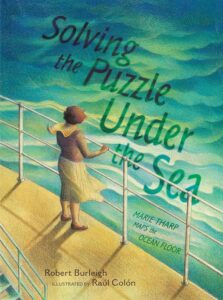
Out of School & Into Nature: The Anna Comstock Story by Suzanne Slade
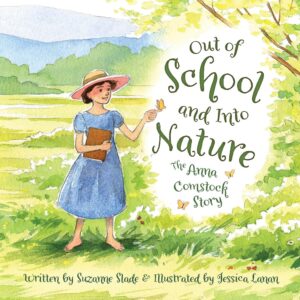
Margaret & the Moon by Dean Robbins
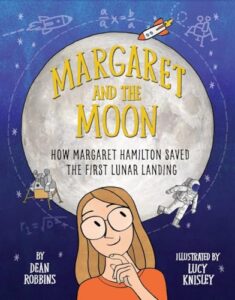
An older title on Mary Anning: Stone Girl Bone Girl by Lawrence Anholt
One of my very favorite poets, Joyce Sidman, has a bio coming out on Maria Merian called The Girl Who Drew Butterflies–so excited for this one!!
From Michelle Goetzl of Books My Kids Read:
As to the above comment from Maria, we bought the Grace Hopper book and it is marvelous! And we have preordered the Dr. Temple Grandin book.
p.s. Related posts:
STEM Picture Books with BIPOC Characters
Great STEM Picture Books paired with Fun Activities
STEM Books on Scientific Minds, Methods, & Discovery
5 STEM Picture Books Celebrating Differences
Earth Sciences STEM Picture Books
Top 10 STEM Bird Books for Bird-Watching Kids
Really Fun Videos of STEM Experiments for Kids
Top 10 STEM Expository Nonfiction Picture Books
Lego STEM Creativity: Building Lego Models
14 Autumn Picture Books with STEM and Diversity
p.p.s. To find actual female scientists, there is a list of Best Female Scientists in the World 2022 Ranking!
To examine any book more closely at Amazon, please click on image of book.
As an Amazon Associate, I earn from qualifying purchases.
Follow PragmaticMom’s board Multicultural Books for Kids on Pinterest.
Follow PragmaticMom’s board Children’s Book Activities on Pinterest.
My books:
Amazon / Signed or Inscribed by Me
 Amazon / Signed or Inscribed by Me
Amazon / Signed or Inscribed by Me
Food for the Future: Sustainable Farms Around the World
- Junior Library Guild Gold selection
- Selected as one of 100 Outstanding Picture Books of 2023 by dPICTUS and featured at the Bologna Children’s Book Fair
- Starred review from School Library Journal
- Chicago Library’s Best of the Best
- 2023 INDIES Book of the Year Awards Finalist
- Green Earth Book Award longlist
- Imagination Soup’s 35 Best Nonfiction Books of 2023 for Kids
Amazon / Barefoot Books / Signed or Inscribed by Me











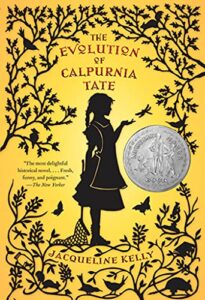












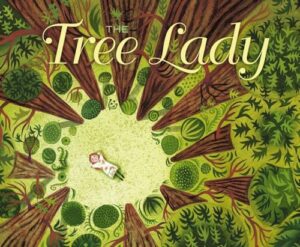
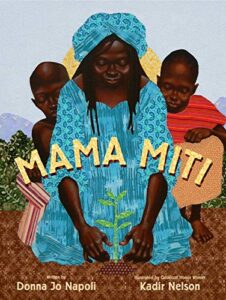
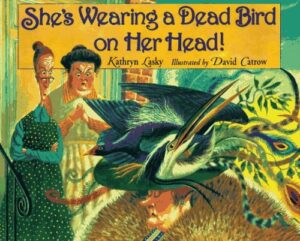


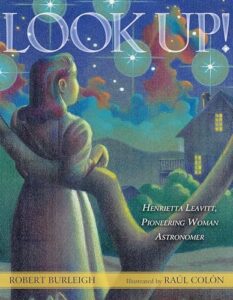


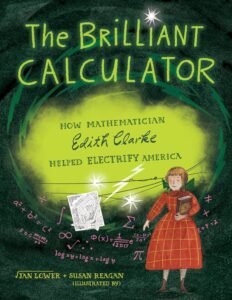

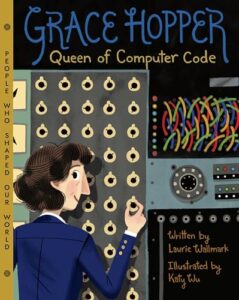








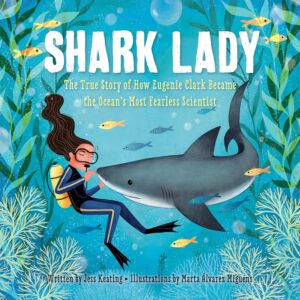
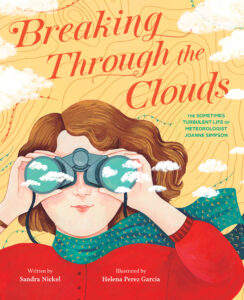











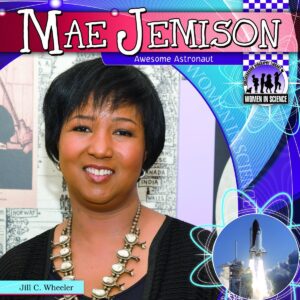






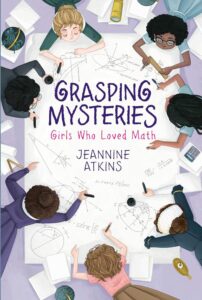
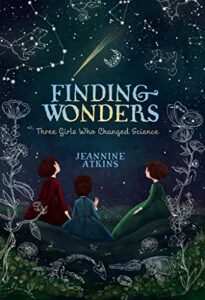











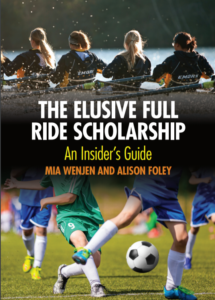




Such a well-rounded list, Mia!! I would also add Jeannine Atkins’s Finding Wonders here too. I just read & enjoyed The Shark Lady :). And I also LOVE The Tree Lady!! Laurie Wallmark also has a new one, Grace Hopper Queen of Computer Code.
I know more, so I may stop back again, but one that I cannot wait to read is called: The Girl Who Thought in Pictures about Dr. Temple Grandin! I also enjoyed Sy Montgomery’s bio of her.
And my friend and agency sister, Hayley Barrett has a bio coming out on astronomer Maria Mitchell–can’t wait for that one either!!
I will add them to this post! Thanks so much for your wonderful recommendations Maria! I feel lucky to have your expertise!
Awesome list as always! Some of our favorites and some we have to check out.
As to the above comment from Maria, we bought the Grace Hopper book and it is marvelous! And we have preordered the Dr. Temple Grandin book.
It is so great to see such wonderful books encorouging our kids to dream and reach for the stars.
Thanks so much for your great recs Michelle! I will add them to this post!
Here are some more titles:
Ada Lovelace Poet of Science by Diane Stanley
Me … Jane by Patrick McDonnell–one of my all-time favorites!!
Caroline’s Comets by Emily Arnold McCully
Solving the Puzzle Under the Sea by Robert Burleigh
Out of School & Into Nature: The Anna Comstock Story by Suzanne Slade
Margaret & the Moon by Dean Robbins
An older title on Mary Anning: Stone Girl Bone Girl by Lawrence Anholt
And one of my very favorite poets, Joyce Sidman, has a bio coming out on Maria Merian called The Girl Who Drew Butterflies–so excited for this one!!
Thank you Maria!!!
There are so many wonderful books here!
Thanks so much MaryAnne! Adding another dozen books suggested in the comments too!
Mia, What a great list, with many of my favorites. It’s encouraging to see that young readers have more and more to inspire them. Thank you (and Maria!) for including some of my books. I could go on — I love the Donna Jo Napoli/Kadir Nelson book about Wangarii Maathai, but also some of the others. And Hidden Figures, in the young readers edition, may be above the age range for many of these, but it’s so excellent, and I hope some inspired by the movie will turn to Margot Lee Shetterly’s book. Thank you for your good work!
Hi Jeannine,
Thanks so much for your great suggestions! I want to make sure my readers know about your book, FINDING WONDERS:
Finding Wonders, offers a look into the lives of scientists Maria Merian, Mary Anning, and Maria Mitchell.
Hi, is there an updated list for this great title? If so, please add ‘Careers for Girls’ by Anne Daly. Thank you.